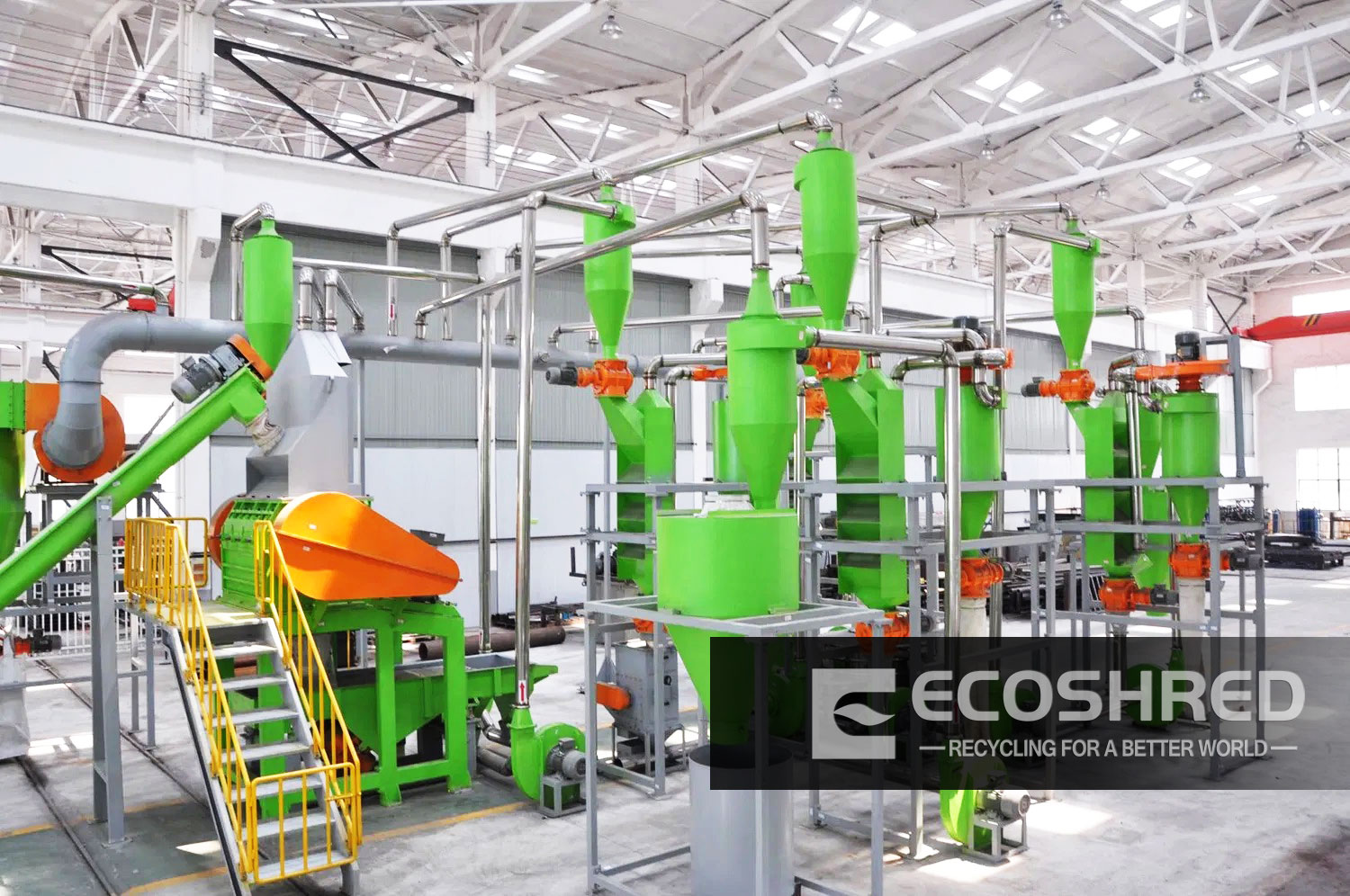When selecting equipment for tire recycling operations, many people focus on large shredders, often overlooking the downstream equipment that is critical to the true profitability of tire recycling. The key lies in effectively separating the difficult components of shredded tires: nylon fibers and steel wire.
Shredded tires are a coarse mixture of rubber chips, steel wires, and nylon fiber. Using this mixture directly can lead to serious problems. Nylon fibers affect rubber quality, which can cause lumps in new rubber products or reduced strength in rubber asphalt. Residual steel wire is particularly problematic, quickly wearing out and damaging expensive shredders and fine grinding equipment, resulting in costly downtime. In addition, contaminated rubber can significantly reduce market prices.
Effective separation technology is key to ensuring that the entire recycling line is economically viable.
Removing Nylon: Enhancing Rubber Value
Extracting lightweight nylon fiber from rubber granules requires a specialized solution. Air separation systems and vibrating tables are essential, taking advantage of differences in material density and properties. The airflow lifts and carries away the lighter nylon, while the denser rubber granules fall down. These systems achieve their best results once they have pulverized the rubber into smaller granules, typically 1-5 mm. The effort is worth it: nylon-free rubber can enter higher-end markets, such as high-quality playground surfaces, molded parts, and reliable asphalt mixes, which fetch higher prices. Some systems also collect nylon fibers separately for recycling.
Steel Extraction: Protect Equipment and Increase Revenue
Steel wire is valuable, but it poses a serious threat to downstream machinery. The solution is strategically placed powerful magnets. Powerful drum magnets or belt magnets suspended from a conveyor are typically installed after a secondary pulverizer (such as a Rasper) and again after pulverization. A well-designed magnetic separation system can achieve 98-99% steel removal efficiency. Not only does this protect the pulverizer and mill from expensive damage and improve safety, it also produces clean, marketable scrap steel, which directly generates additional revenue. It is critical that the final rubber product is pure and able to achieve its maximum market value without contamination from steel.
Efficient recycling process
Profitability comes from an integrated process, not just a primary crusher. An efficient recycling process includes: primary crushing, secondary crushing (such as using Rasper) combined with initial magnetic steel removal, rubber shredding to 1-5 mm, and finally effective nylon fiber separation. Each stage relies on the previous separation step. Attempting to bypass these stages or use inappropriate separators will result in poor output quality and increased maintenance costs, jeopardizing equipment investment and profitability.
When selecting a tire recycling line, there are other factors that need to be carefully considered. Prioritize proven and reliable nylon removal technology and multi-stage magnetic steel separation systems. This focus on efficient separation can transform mixed tire waste into high-value, clean rubber granules and recyclable steel to establish a truly profitable recycling business. To learn how optimized separation equipment can maximize the value of your output, talk to Ecoshred recycling equipment experts.

